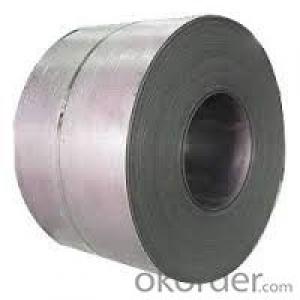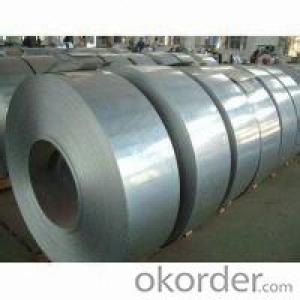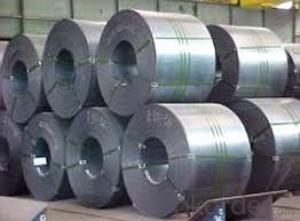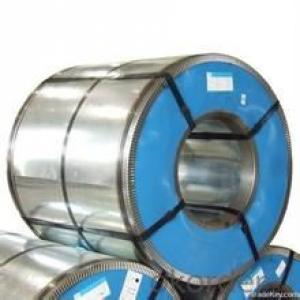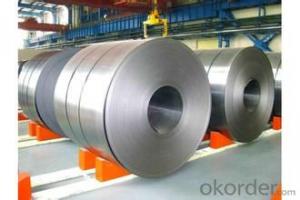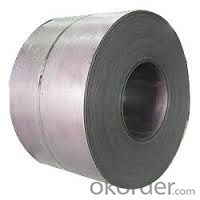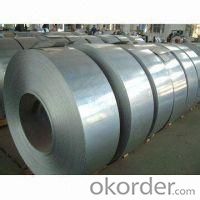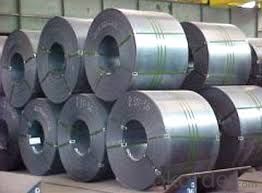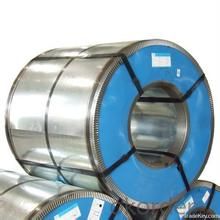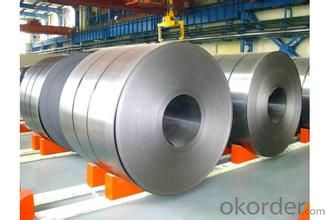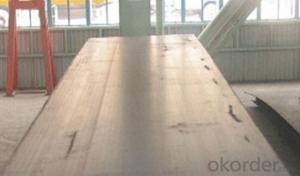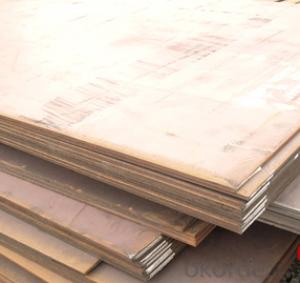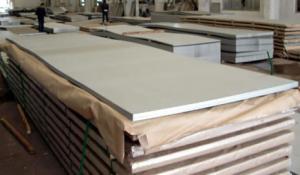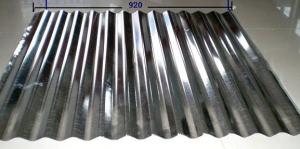hot rolled steel sheet DIN 17100 in CNBM
- Loading Port:
- China main port
- Payment Terms:
- TT OR LC
- Min Order Qty:
- 30 m.t.
- Supply Capability:
- 500000 m.t./month
OKorder Service Pledge
OKorder Financial Service
You Might Also Like
Product Description:
Rolled to its final dimensions while it’s hot enough to scale, our hot-rolled steel is an amalgamation of the various qualities of steel. It can be in the form of plates, sheets and coils. Our Hot-Rolled Steel Sheets and Coils are applied to a wide range of uses such as automobile, electrical appliance, machinery manufacturing, container manufacturing, shipbuilding, bridge, pipeline, and receive high acclaim from our customers for its excellent quality.
Description:
Product: | Hot Rolled Steel Coils/Sheets |
Material: | Q195,Q235,A36,SS400,S235JR,Q345,ST37-2, CCSB etc |
Standard : | JIS G3002 GB/T251B |
Technique: | hot rolled |
Thickness | 1.2mm to 200mm |
Tolerance of thickness: | :+/-0.03mm |
Width: | 750mm-2000mm |
Tolerance of width: | :+/-5.00mm (aiming to +/-2.00mm) |
Normal width: | 914mm, 1000mm, 1200mm, 1219mm, 1250mm,1500mm |
Length: | According to requirement |
Coil ID: | 508mm-610mm |
Coil Weight: | 10-25 Metric Tons |
Surface: | Black, Chromate, fingerprint resistant treatment, slight oiled or non-oiled, dry |
Port of Loading: | Tianjin/Shanghai port |
Packaging Details: | Standard export packing or according to the clients required |
Delivery Time | Within 30 days after received 30% deposit or workable L/C |
Payment Terms: | L/C,T/T |
Image:
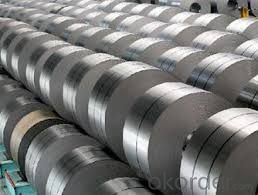
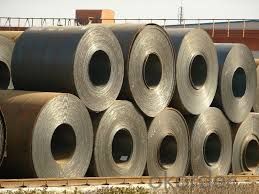
- Q: Can the steel sheets be used for outdoor furniture?
- Yes, steel sheets can be used for outdoor furniture. Steel is a durable and weather-resistant material, making it suitable for outdoor applications. It can withstand various environmental conditions such as rain, wind, and sunlight without corroding or deteriorating quickly. Additionally, steel sheets can be molded and shaped into different furniture designs, providing both functionality and aesthetic appeal. Whether it's for tables, chairs, benches, or even decorative elements, steel sheets can be an excellent choice for outdoor furniture due to their strength, longevity, and versatility.
- Q: What are the different types of steel sheet alloys?
- There exists a range of steel sheet alloys, each possessing distinct properties and applications. Among the most prevalent steel sheet alloys are: 1. Carbon Steel: This variety, composed primarily of iron and carbon, serves as a fundamental form of steel. Its notable strength and affordability render it extensively used in the construction, automotive, and manufacturing sectors. 2. Stainless Steel: Distinguished by its resistance to corrosion, stainless steel is produced by introducing chromium and other alloying elements to carbon steel. It finds common employment in environments where hygiene and durability hold significance, such as kitchen appliances, medical equipment, and architectural structures. 3. Galvanized Steel: To protect against corrosion, this type of steel is coated with a layer of zinc. Galvanized steel sheets find frequent application in outdoor settings, including roofing, fencing, and automotive components. 4. Alloy Steel: Alloy steel sheets are created by incorporating diverse alloying elements, like nickel, chromium, and molybdenum, into carbon steel. These alloys heighten the strength, hardness, and wear resistance of the steel, rendering it suitable for industries such as aerospace, automotive, and machinery. 5. Tool Steel: This steel variety is specifically engineered for the production of tools and dies. It distinguishes itself through high hardness, resistance to deformation, and the ability to retain sharp edges. Tool steel sheets are commonly employed in the manufacturing of cutting tools, drills, and molds. 6. Electrical Steel: This steel undergoes specialized processing to minimize magnetic losses and enhance electrical conductivity. Electrical steel sheets are utilized in the production of transformers, electric motors, and generators. These examples represent merely a fraction of the diverse steel sheet alloys accessible. Depending on the specific requirements of a project or application, engineers can opt for the appropriate alloy to achieve the desired properties and performance.
- Q: What is the difference between a galvanized and painted steel sheet?
- A galvanized steel sheet is coated with a layer of zinc, which provides protection against corrosion. On the other hand, a painted steel sheet is coated with a layer of paint, which provides aesthetic appeal and protection against weathering.
- Q: Can steel sheets be used in electrical applications?
- Yes, steel sheets can be used in electrical applications. They are commonly utilized in the construction of enclosures, cabinets, and panels for electrical equipment due to their durability, strength, and ability to provide electromagnetic shielding.
- Q: Can steel sheets be used in earthquake-resistant construction?
- Certainly, earthquake-resistant construction can utilize steel sheets. Steel, being a robust and durable material, has been extensively employed in seismic design and construction. As structural elements, steel sheets can function as beams, columns, and bracings, offering stability and strength to buildings. Steel possesses various properties that render it suitable for earthquake-resistant construction. Firstly, its flexibility and ductility allow it to deform without fracturing under seismic stress. This flexibility enables steel structures to absorb and dissipate seismic energy, thereby minimizing damage and reducing the impact on buildings. Additionally, steel boasts a high strength-to-weight ratio, meaning it can withstand considerable forces while remaining relatively lightweight. This feature is advantageous in earthquake-resistant construction as it reduces the overall weight of the structure, subsequently lessening the seismic forces exerted on the building. Moreover, steel is a homogeneous material, meaning it exhibits consistent properties and behavior throughout its structure. This characteristic facilitates accurate and predictable analysis and design of steel structures, ensuring their ability to withstand seismic forces. Furthermore, steel structures can be custom-designed and constructed with specific earthquake-resistant features, such as base isolation or energy dissipation devices, to further enhance their seismic performance. These features aid in absorbing and dissipating seismic energy, thereby minimizing the impact on the structure and enhancing its resistance to earthquakes. To conclude, steel sheets can indeed be utilized in earthquake-resistant construction. Their flexibility, strength, and capability to dissipate seismic energy make them an appropriate material for withstanding earthquake forces, ensuring the safety and stability of buildings in seismic regions.
- Q: Can steel sheets be bent or curved?
- Yes, steel sheets can be bent or curved using various methods such as press brakes, rollers, or heat treatment techniques.
- Q: Can the steel sheets be used for roofing purposes?
- Yes, steel sheets can be used for roofing purposes. Steel roofing sheets are a popular choice due to their durability, strength, and resistance to harsh weather conditions. They provide excellent protection against elements such as rain, snow, and hail. Steel roofing sheets are also fire-resistant and can withstand high winds, making them a reliable option for roofing. Additionally, steel sheets are lightweight, which makes them easier to install and reduces the load on the structure. They are available in various designs and colors, allowing for customization according to individual preferences. Overall, steel sheets are a versatile and practical choice for roofing purposes.
- Q: Are steel sheets resistant to warping or bending?
- Yes, steel sheets are known for their high resistance to warping or bending due to their strong and rigid nature.
- Q: Are steel sheets suitable for harsh weather conditions?
- Steel sheets are highly suitable for harsh weather conditions due to their durability and strength. Steel is renowned for its ability to withstand extreme weather conditions, including high winds, heavy rain, snow, and hail. Moreover, steel sheets are designed to resist corrosion, rust, and degradation caused by prolonged exposure to severe weather, ensuring their longevity and dependability in any climate. Furthermore, steel sheets can be coated with protective finishes, such as galvanized or painted coatings, which further enhance their resistance to weathering. This aspect has made steel sheets a popular choice for various applications in areas prone to harsh weather, such as roofing, siding, and outdoor structures. They provide exceptional protection and structural integrity even in the most challenging weather conditions.
- Q: What is the yield strength of steel sheets?
- The yield strength of steel sheets generally ranges from 250 to 550 megapascals (MPa), depending on the type and grade of steel used.
Send your message to us
hot rolled steel sheet DIN 17100 in CNBM
- Loading Port:
- China main port
- Payment Terms:
- TT OR LC
- Min Order Qty:
- 30 m.t.
- Supply Capability:
- 500000 m.t./month
OKorder Service Pledge
OKorder Financial Service
Similar products
Hot products
Hot Searches
Related keywords
